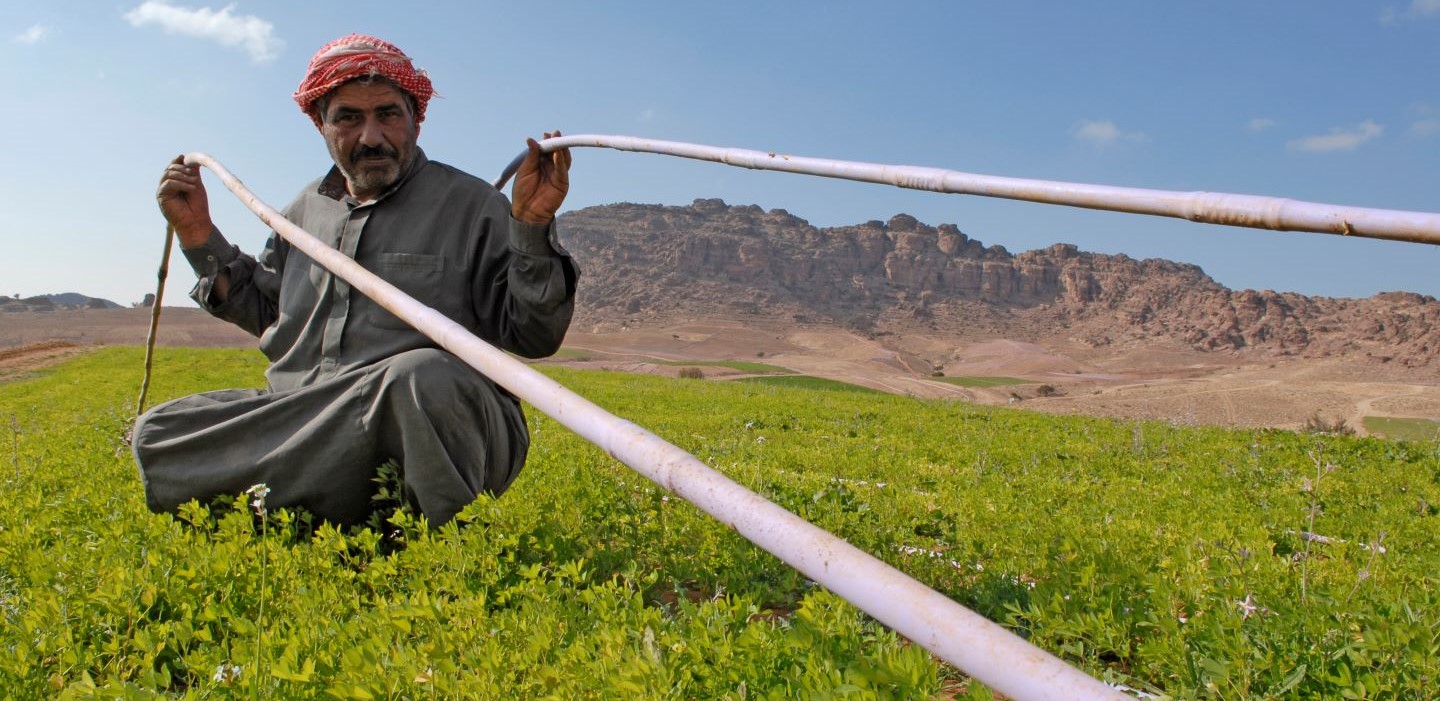The challenges and opportunities of investing in small-scale irrigation
IFAD Asset Request Portlet
Asset Publisher
The challenges and opportunities of investing in small-scale irrigation
Estimated reading time: 4 minutes
Many countries in the Arab world count on irrigation to increase production, reduce reliance on unpredictable and scarce rainfall, and provide food security, income and employment to poor farmers. This reliance is likely to intensify with a changing climate: across the region, the IPCC Sixth Assessment Report identifies patterns of increasing drought and aridity on one hand, and devastating precipitation on the other.
Countries have traditionally relied on large irrigation schemes, but these often lack sustainability and suffer from the inability of governments and their counterparts to develop or maintain infrastructure.
By contrast, small-scale irrigation schemes usually work well, though they must be carefully planned from the outset so that they are not overwhelmed by complex physical and managerial arrangements.
Successful small-scale irrigation is grounded in infrastructure that is efficient, climate-smart, resilient and financially sustainable. Most importantly, water infrastructure should allow for efficient water use and the integration of renewable energy technologies.
Models of small-scale irrigated agriculture can vary from individual farmers to aggregators, such as producer organizations, contract farming arrangements, and agro-input traders and collectors. These models differ in day-to-day management, governance, payment mechanisms and water and land tenure arrangements. Selecting the right model for the context is crucial.
IFAD has explored numerous interventions to meet the needs of small-scale farmers, including techniques for harvesting, storage and efficient use of water, and incorporating renewable energy into new and ongoing projects.
Water harvesting
Harvesting water from catchments, rooftops, yards, roads and other hard surfaces can be an additional or even primary water source in some areas. Studies from Burundi, India, Tanzania and Uganda suggest that water harvesting can increase agricultural production by 60–100 per cent.
In Lebanon, an IFAD-funded project challenged deteriorating land and water resources and increasing population by terracing steep hillsides, conserving soils, planting high-value fruit trees, and storing erosive runoff in ponds for supplemental irrigation in summer. As a result, farmers protected natural resources from erosion, significantly increased their farm income and created jobs.
Water conveyance and application
Open earthen canals and surface irrigation are used for over 95 per cent of irrigated lands worldwide. These can be extremely wasteful compared to pipes or lined canals for water conveyance, and to drip and sprinkler irrigation for water application.
In Egypt, the IFAD-supported OFIDO project introduced an underground low-pressure piped system to replace traditional earth-lined systems, increasing water-use efficiency by at least 20 per cent, and making distribution more equitable. It reduced irrigation labour and water losses, and involved farmers in user associations for easier operation and maintenance. Replacing diesel pumps with electric pumps reduced their cost and number, cutting carbon emissions.
Elsewhere, a series of USAID studies assessed a package combining drip irrigation, solar power and conservation agricultural practices in Ethiopia’s Amhara region. This helped vegetable farms reduce water use by 30 per cent. Labour productivity increased up to 10-fold, while yields rose by 15–30 per cent and annual farm income by US$2,700 per hectare. There are thus substantial co-benefits to such packages.
Financing small-scale irrigation
These successes can be replicated elsewhere, with site-specific adaptations. Yet there remains a global financing shortfall for small-scale irrigation of US$80 billion per year.
The solution adopted by Egypt’s OFIDO project was to implement a pre-financing tool of irrigation improvement interventions with a cost-recovery mechanism, whereby total costs were borne by farmers over 20 years. The government subsidy was considered in the abolished cost inflation and interest which, if taken into account, would represent a large portion of the real cost of interventions. This mixed mode of financing incentivized farmers to transfer to productive, water-saving and – importantly – environmentally friendly irrigated agriculture.
Operation and maintenance costs can be fully funded by organized farmer groups. Irrigation projects must put in place exit strategies with established legislations for financing operation and maintenance, thereby ensuring infrastructure sustainability. Farmers are thus incentivized to use efficient and water-saving techniques and renewable energy technologies.
Building partnerships
Collaborations are an important means of increasing aid effectiveness, by mobilizing resources and promoting new funding sources to reach scale and implement diversified technological solutions.
Integrating private sector suppliers into service provision can help tailor cost-effective technological solutions to small-scale farmers’ needs, especially in micro-irrigation and renewable energy. Private-sector actors with demonstrated track records must act as partners, not just suppliers, allowing for greater integration, with costs limited through piloting initiatives before the wider marketing of developed technology packages.
Climate-smart solutions
At COP26, this year’s climate change summit, a central concern is to help small-scale farmers adapt to changing circumstances and thus prevent food insecurity and loss of livelihoods. For farmers in the Arab world, who are at the front lines of climate change, it is crucial to act now. Innovative approaches to financing small-scale climate-smart irrigation that conserve water and the environment while increasing yields and productivity should be at the core of these efforts.
A version of this blog post was presented at the Fifth Arab Water Forum, held in Abu Dhabi, United Arab Emirates, on 21–23 September 2021.
Publication date: 22 October 2021